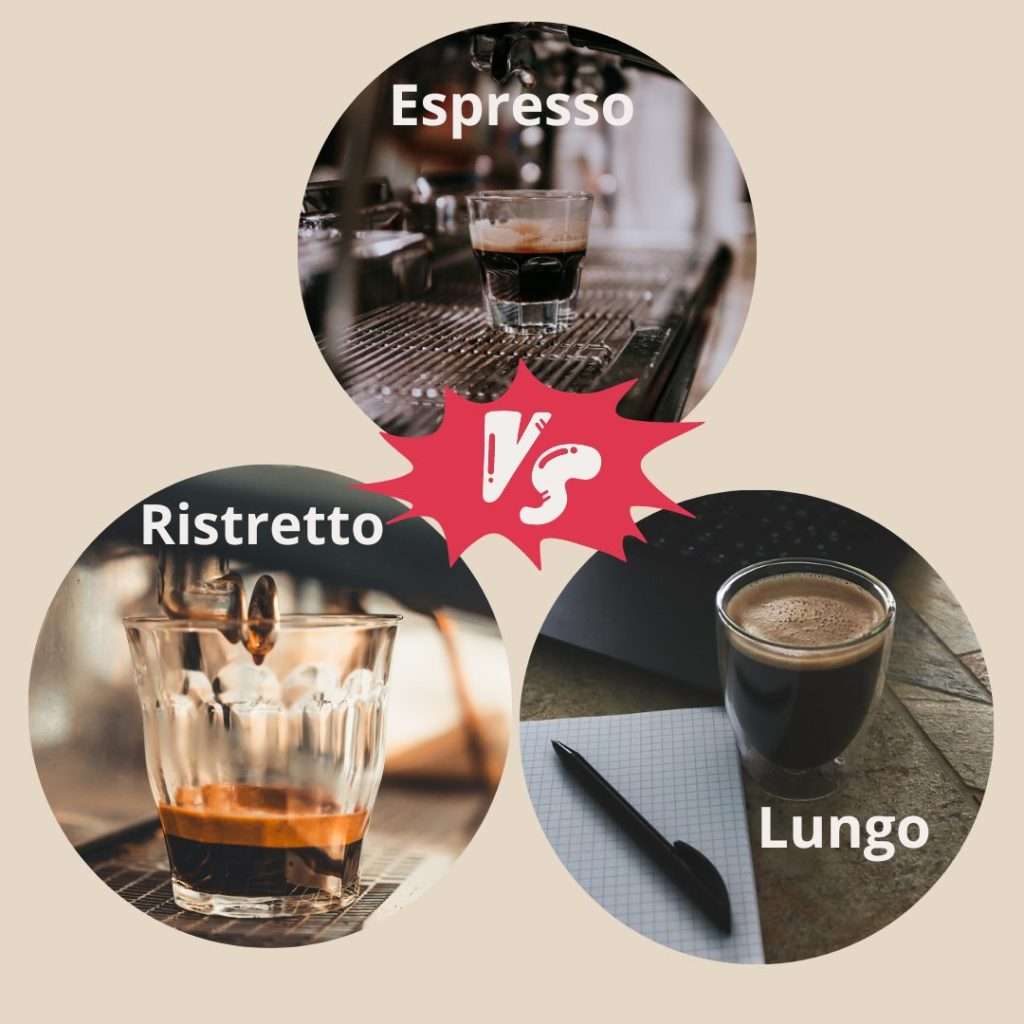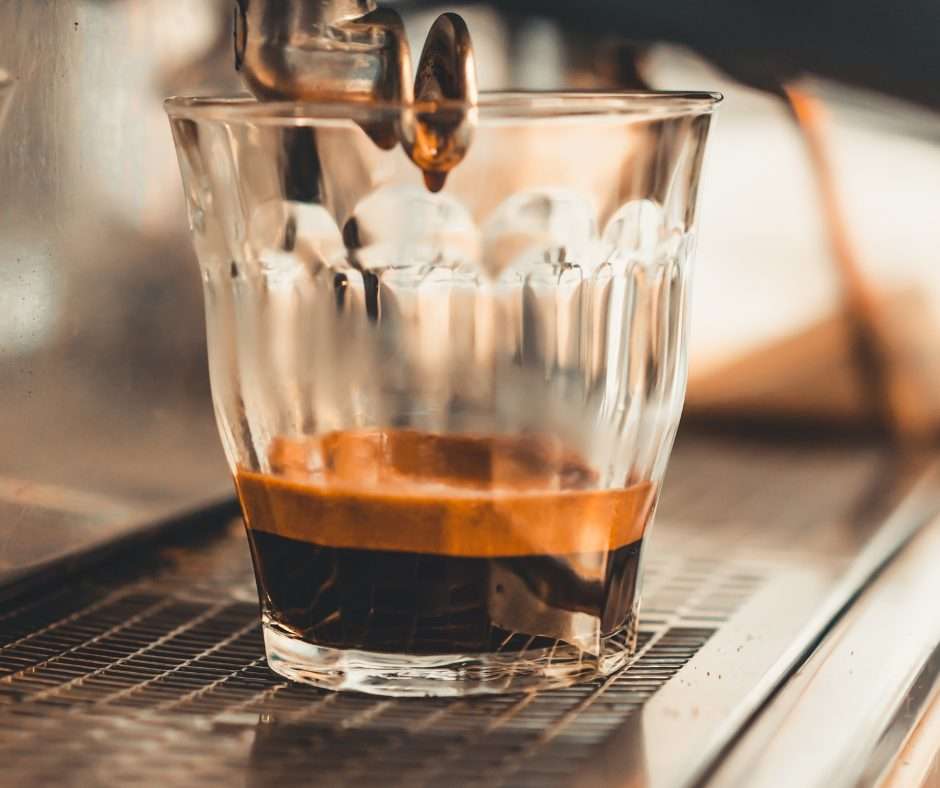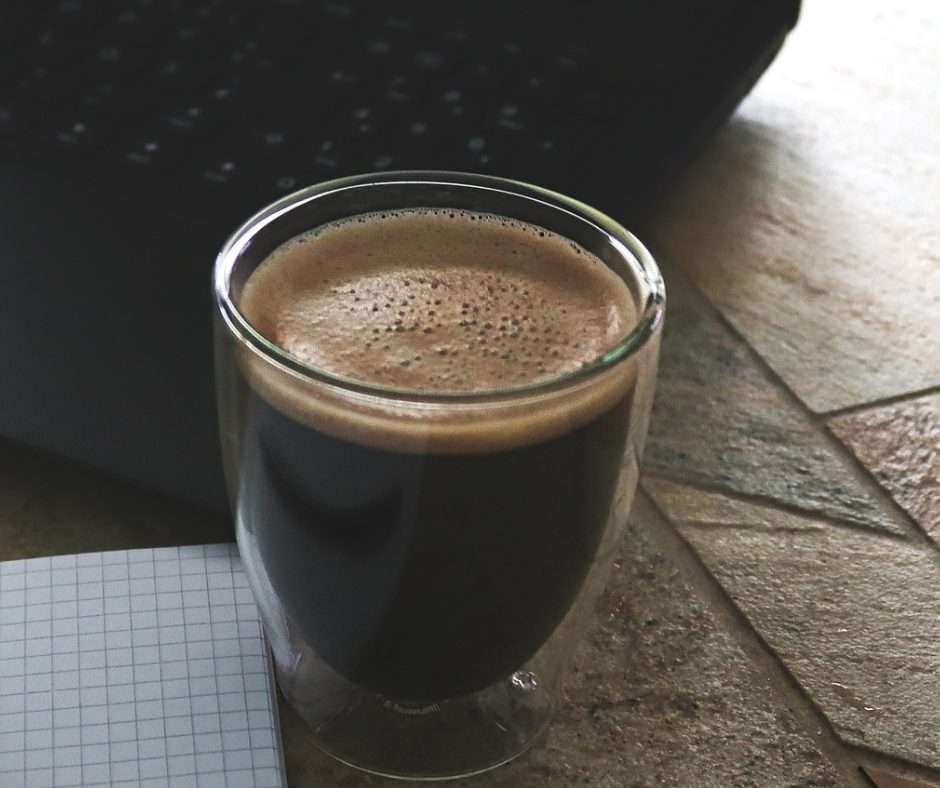Espresso vs Ristretto vs Lungo. The world of coffee is huge, with each region boasting its signature preparation. While espresso has solidified its status as the global coffee icon, its precise characteristics remain elusive to many. In its shadow, the lesser-known ristretto and lungo bring unique brewing methods and flavors.

In this article, we’ll delve into the specifics of each type of drip coffee, helping you understand and appreciate the nuances that set them apart. Whether you’re a curious coffee enthusiast or someone looking to expand their coffee horizons, this guide offers insights into the fascinating world of espresso and its intriguing siblings, ristretto and lungo.
What is Espresso

The espresso is truly unique. Its strikingly bold flavor has become a fundamental part of many people’s daily routines. Credit Image Unsplash
Espresso is a concentrated coffee beverage brewed by forcing hot water under pressure through finely ground coffee. The Specialty Coffee Association (SCA) defines a genuine espresso as a drink ranging between 15 and 35 ml, derived from 7 to 9 grams of finely ground coffee beans. The water should be between 90.5 and 96.1 °C, and the brewing pressure needs to be between 9 to 10 atmospheres. When brewed correctly, the espresso will have a consistency akin to warm honey and will feature a thick, dark golden cream on top.
The magic behind this intense coffee shot is the espresso machine. It produces the required high pressure used, typically between 5 and 15 bars, to push hot water through the coffee. This method ensures a rapid extraction of flavors, resulting in a drink that’s both robust and aromatic.
Once prepared, an espresso consists of two primary parts: the “cream” or crema, a light-colored foam formed from carbon dioxide bubbles, and the liquid, a rich and dark coffee beneath. This combination gives espresso its unique appearance and intense flavor, making it a favorite among coffee enthusiasts and aficionados worldwide.
What is Ristretto?
Ristretto, an Italian term meaning “restricted milk”, is a concentrated coffee similar to espresso but made with less water. To break it down, think of Ristretto as the bolder sibling of espresso – while both drinks use roughly 7 grams of ground coffee for preparation, the brewing method for Ristretto is where the distinction lies.
The process for making a Ristretto is nearly identical to that of espresso, with one primary deviation: the extraction time. A Ristretto’s brewing is halted much sooner than double espresso is, typically around the 15-second mark, which is half the time taken for a regular espresso. This “restricted” brew time results in a drink that captures the compounds extracted quickly, ensuring a robust and distinct flavor profile from its longer-brewed counterpart.
Given its unique extraction process, a Ristretto boasts an intense flavor palette, drawing predominantly from the compounds that are extracted faster. So, for those seeking a more concentrated coffee kick, Ristretto is the brew of choice.
What is a Lungo?

A café lungo is nothing more than an espresso prepared in a slightly different way than traditional espresso in coffee shops.
Lungo, derived from the Italian word for “long,” stands apart in the espresso family as a more diluted and concentrated coffee drink name. Unlike its concentrated counterparts, Espresso and Ristretto,
For comparison, while a standard espresso brews in 18 to 30 seconds using 25 to 35 milliliters of water, a Lungo extends brew time up to a full minute and uses 50 to 60 milliliters of water. This lengthy process, while producing a larger volume of drink, also introduces a nuanced flavor profile. Specifically, long-brewed Lungo extracts additional components from the coffee grounds that can make the drink slightly more bitter. This bitterness arises because prolonged exposure to hot water extracts elements from the beans that would normally remain intact in shorter infusions.
What is the Difference Between Lungo vs Espresso vs Ristretto?
Here’s a comparative table between Ristretto, Espresso, and Lungo, outlining their key differences:
| Feature | Ristretto | Espresso | Lungo |
|---|---|---|---|
| Water Volume | Least amount of water (about 15 ml) | Standard water amount (about 30 ml) | More water (about 60 ml) |
| Extraction Time | Shorter (approx. 15-20 seconds) | Standard time (approx. 20-30 seconds) | Longer (approx. 30-40 seconds) |
| Intensity | More concentrated and intense in flavor | Balanced, standard intensity | Less concentrated, milder |
| Caffeine | Slightly less due to shorter extraction time | Standard level of caffeine | Slightly more due to longer extraction time |
| Body | Full body and dense texture | Medium body and balanced texture | Lighter body |
| Flavor | Intense and concentrated flavors | Balanced and robust flavors | Diluted and milder flavors |
| Acidity | Lower acidity | Balanced acidity | Slightly higher acidity |
| Common Use | Preferred by those seeking a strong, short flavor | Preferred by those seeking a strong, short-flavor | Preferred by those enjoying a longer, milder coffee |
Within the world of espresso brewing, there are three distinguished methods, each uniquely characterized by their Extraction Time, Water Volume, and resulting Flavor Profile:
Extraction Time ⏰
Espresso: Standard extraction time, serves as the benchmark in this comparison.
Ristretto: Shorter extraction than espresso, resulting in a more concentrated flavor.
Lungo: Extended extraction compared to espresso shots, drawing out more compounds and leading to a different flavor profile.
Water Volume 💧
Espresso: Uses a standard amount of water.
Ristretto: Uses less water than espresso, yielding a more robust and slightly sweeter flavor.
Lungo: Utilizes double the water of an espresso, producing a more diluted yet elongated coffee experience.
Flavor Profile ☕
Espresso: Intense and full-bodied.
Ristretto: Even more concentrated, the coffee drinks are typically sweeter due to fewer bitter compounds being extracted.
Lungo: Milder in flavor intensity, offering the coffee lovers a subtler coffee experience.
Which is Stronger: Espresso, Ristretto, or Lungo?
In terms of flavor intensity:
N°1 Ristretto: is the strongest, as it’s the most concentrated with the least water.
N°2. Espresso: follows, serving the same amount as the standard coffee concentration many are familiar with.
N°3. Lungo: is the least strong, given it uses the most water, leading to a more diluted bitter taste.
Caffeine Levels of Espresso, Ristretto, and Lungo:
When evaluating caffeine content:
N°1. Espresso (25 ml): 68 mg of caffeine.
N°2. Ristretto (15 ml): 63 mg of caffeine, despite its intense flavor, generally has slightly less caffeine than espresso due to its shorter extraction time.
N°3. Lungo (60 ml): 85 mg of caffeine, Lungo, with its prolonged brewing, might have slightly more caffeine than espresso, but it’s spread out over a larger volume, making its caffeine concentration less intense
How to make Ristretto, Espresso, and Lungo at home
| Espresso | Ristretto | Lungo |
 |  |  |
| Ingredients -Freshly ground coffee beans (about 18-20 grams) -30 ml (1 ounce) of fresh water | Ingredients: -Freshly ground coffee beans (about 18-20 grams) -15 ml (0.5 ounces) of fresh water | Ingredients: -Freshly ground coffee beans (about 18-20 grams) -60 ml (2 ounces) of fresh water |
| STEPS: 1. Preheat the espresso machine. 2. Grind the coffee beans to a fine consistency. 3. Tamp the grounds firmly into the portafilter. 4. Lock the portafilter into the machine. 5. Start the extraction. Aim for about 25-30 seconds. 6. Pour about 25-30 ml (1 ounce) into your cup. | STEPS: 1. Preheat the espresso machine. 2. Grind the coffee beans to a fine consistency. 3. Tamp the grounds firmly into the portafilter. 4. Lock the portafilter into the machine. 5. Start the extraction. Aim for about 15-20 seconds. 6. Pour about 15 ml (0.5 ounces) into your cup. | STEPS: 1. Preheat the espresso machine. 2.Grind the coffee beans to a fine consistency. 3. Tamp the grounds firmly into the portafilter. 4. Lock the portafilter into the machine. 5. Start the extraction. Aim for about 15-20 seconds. 6. Pour about 15 ml (0.5 ounces) into your cup. |
Conclusion
Concluding our exploration of “Espresso vs Ristretto vs Lungo”, understanding these nuances makes every coffee sip an informed pleasure. Now that you’re equipped with the knowledge of what sets ristretto, espresso, and lungo apart, you’re ready to savor your preferred brew, whether at home or in a café. Keep coming back to this guide whenever you’re in the mood for a deep dive into the world of coffee. And for those seeking organic, flavorful experiences in their cup, remember that the best brews start with understanding. Cheers to your next perfect cup!
Frequently Ask Questions: Espresso vs Ristretto vs Lungo
1. Is ristretto stronger than espresso?
Yes, ristretto is stronger than espresso, as it is more concentrated with a richer flavor.
2. Is Lungo 2 shots of espresso?
No, lungo is not 2 shots of espresso. It’s a single shot extracted with more water, resulting in a larger, milder coffee.
3. Do you make latte with espresso or Lungo?
Lattes are typically made with espresso, not lungo, due to espresso’s stronger flavor profile.
4. Is Nespresso ristretto espresso?
Yes, Nespresso ristretto capsules are a type of espresso, that offers a more concentrated and stronger flavor than regular espresso capsules.
5. Which has more caffeine, espresso or ristretto?
Espresso and ristretto have similar caffeine levels; ristretto is more concentrated but uses the same coffee amount as espresso.
6. What is the difference between lungo and Americano?
Lungo is a longer espresso shot with more water, while Americano combines espresso with additional hot water, resulting in a lighter flavor.
